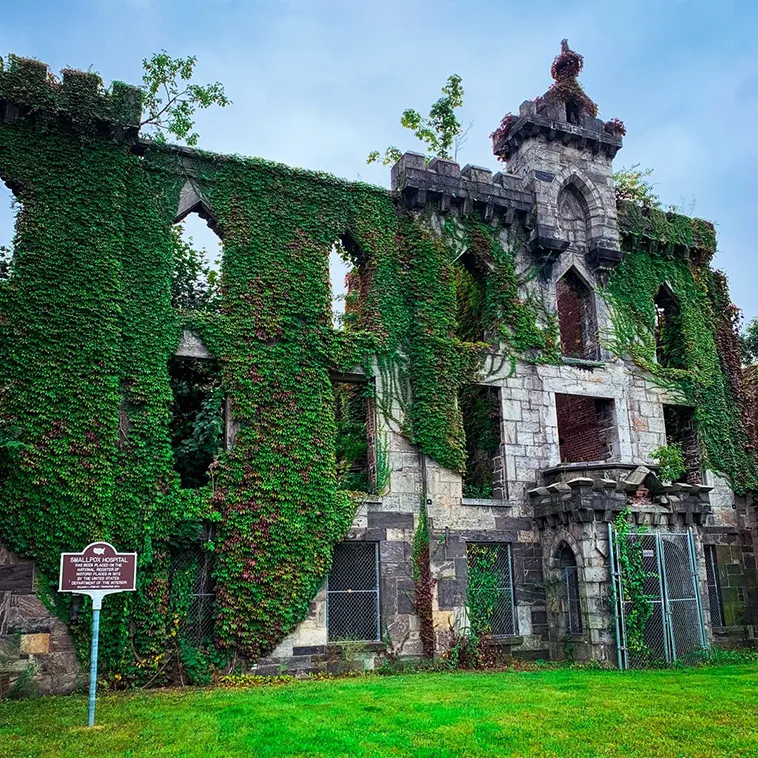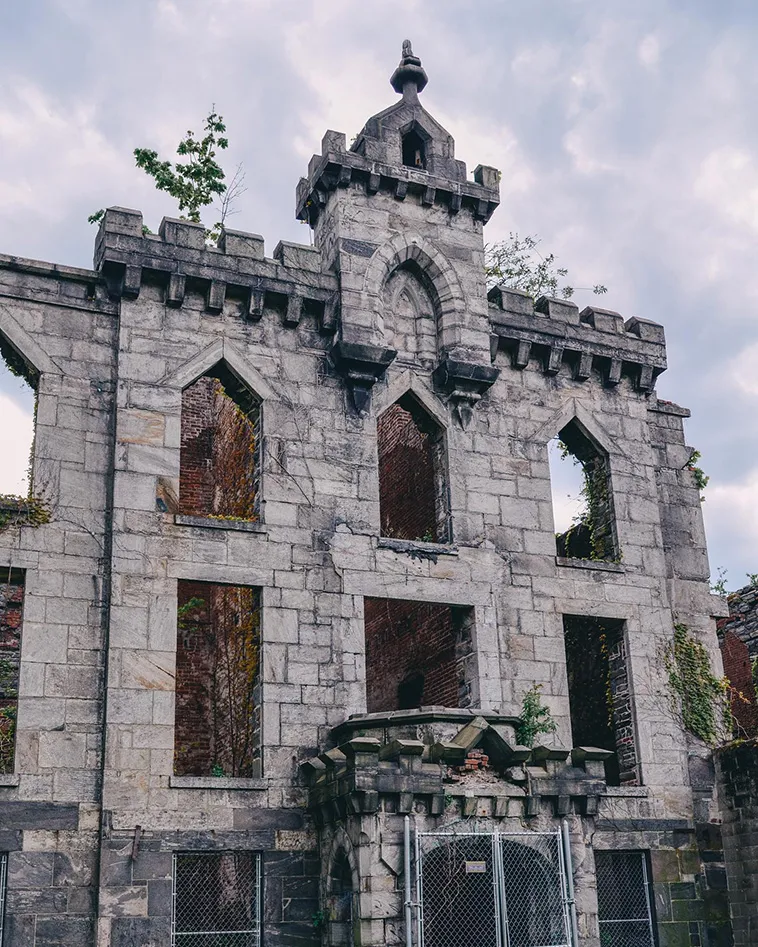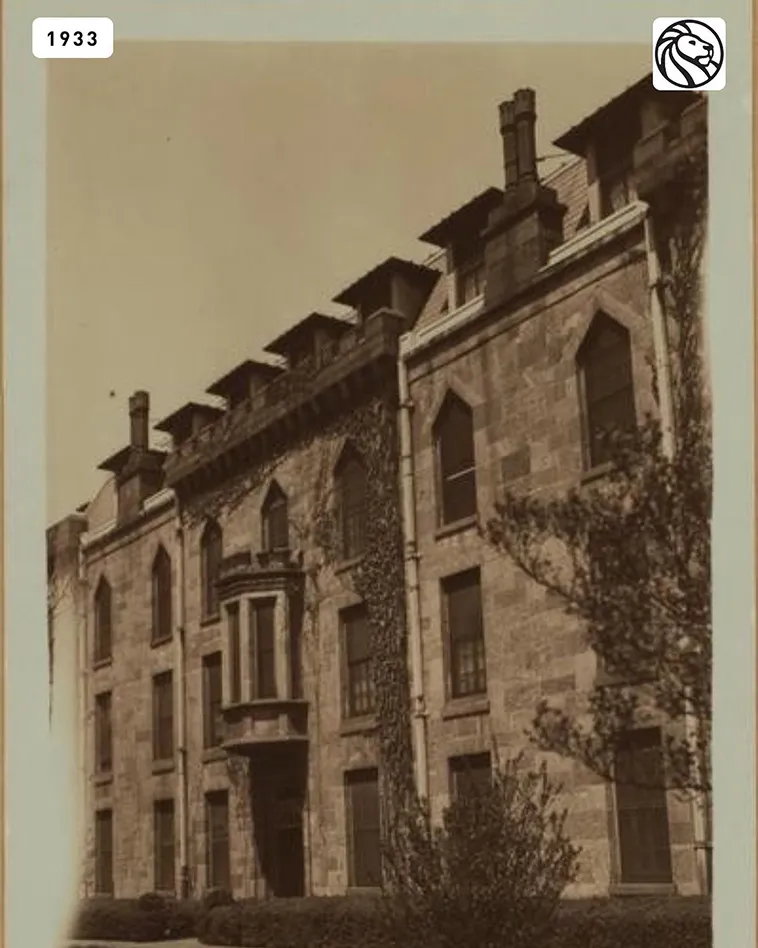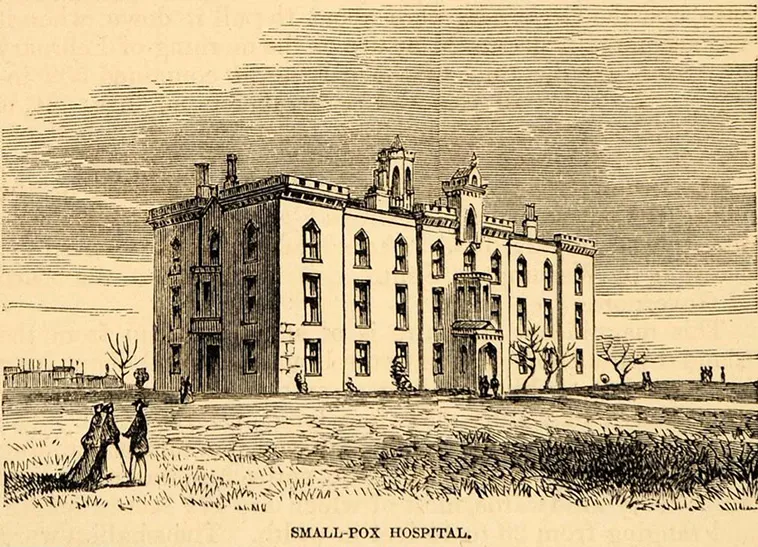Discover the historic ruins of the 1850s smallpox hospital on Roosevelt Island in New York
Smallpox, once a menacing disease, posed a significant threat to humanity before the advent of science and the development of its life-saving vaccine. The tale of the Smallpox Hospital on Roosevelt Island emerged during this era, providing a glimpse into the efforts made to isolate infected patients and protect the general population. Situated at the southern tip of Blackwell’s Island, now known as Roosevelt Island, this facility ensured ferry access while keeping the contagious individuals safe.

Renowned architect James Renwick Jr. celebrated for his work on prominent structures like Grace Church on Broadway and St. Patrick’s Cathedral on Madison Avenue, undertook the task of designing the smallpox hospital. Embracing the Gothic Revival style, Renwick crafted a building that blended architectural magnificence with a functional purpose. From 1856 to 1875, the hospital catered to approximately 7,000 patients annually, providing them with medical care and isolation.

In 1875, the smallpox hospital transformed as it was converted into a dormitory for nurses. Concurrently, the city authorities decided to relocate the smallpox hospital to North Brothers Island due to the increasing population density on Blackwell’s Island. This decision aimed to ensure the safety of the island’s residents and prevent the spread of the disease.


As time progressed, the significance of the Renwick Hospital waned, and by the 1950s, it had become abandoned and in a condition of ruin. The city deemed it impractical and ceased its utilization. However, the historical value and architectural beauty of the Smallpox Hospital on Roosevelt Island endure, attracting attention as a cultural landmark.


It is worth acknowledging the pivotal role of science and the development of vaccines in combating smallpox. Once feared worldwide, the disease was eventually eradicated through a collaborative global vaccination program led by the World Health Organization (WHO)[1]. The final known case of smallpox occurred naturally in Somalia in 1977, marking a significant achievement in the history of public health.


Today, the Smallpox Hospital on Roosevelt Island is a testament to the progress in medicine and public health. While its original purpose has long since faded, its architectural splendor and historical significance continue to captivate visitors as a tangible reminder of the battles fought against infectious diseases and the triumphs of medical science.
The Smallpox Hospital on Roosevelt Island is a captivating relic of the past, shedding light on the efforts to combat smallpox during a time when it posed a grave threat to humanity. As science advanced and vaccines were developed, the disease was eventually eradicated, allowing us to reflect on this historical period. The hospital’s architectural grandeur and transformation into a nurses’ dormitory showcase the resilience of structures and the adaptability of spaces. While the Renwick Hospital may no longer fulfill its original purpose, it remains an enduring symbol of progress in healthcare and the triumph over one of the world’s most dreaded diseases.